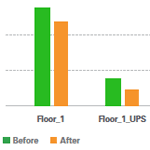Wireless Mesh Network
Reliable, industrial-grade communications.
The Vigilent system incorporates industrial-grade, wireless mesh technology to deliver a network that is easy to install, requires little to no oversight, and resists failure. It can scale from a couple of nodes to many thousands in a single facility, to accommodate the widest range of needs. And, because it’s wireless, it significantly reduces the upfront costs to deploy a monitoring and control system.
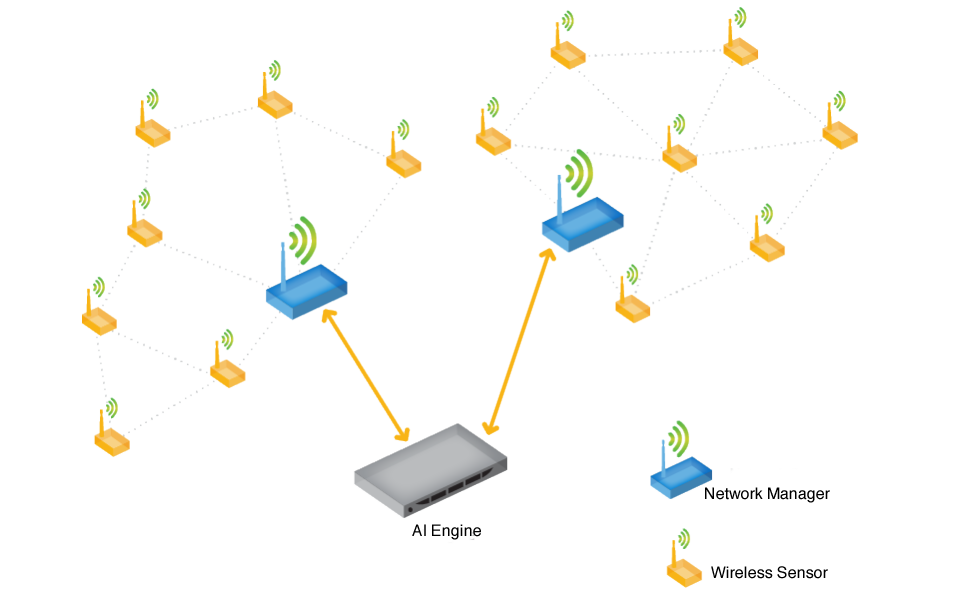
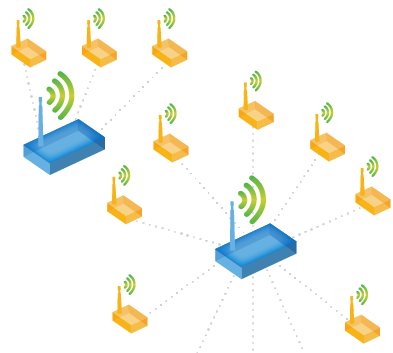
Scalable and Flexible
Dynamic Cooling Management® systems measure real-time temperatures at hundreds to thousands of points throughout a facility.
The large volume of sensor points makes a hardwired network impractical, since it is much more costly, and far less flexible than a wireless solution. Laying cable can be disruptive to business, and when changes are made to equipment placement or floor plans, facilities managers will need to update the network configuration.
The wireless system enables sensors to be added or removed from the network without disrupting communications, as well as ensuring the system can be easily reconfigured to address additional equipment or rooms.
The system delivers robust performance in any size facility, whether that involves a handful of sensors, or thousands.
Rapid Deployment
Compared with hardwired solutions that typically cost thousands of dollars per drop, a wireless network provides more monitor and control points and greater visibility into your facility at a significantly lower cost.
The sensors collect temperature, as well as other environmental readings, and are placed at strategic locations throughout a facility. In a data center, for example, sensors are often placed at every third rack. Typically they are applied using fasteners that can be stuck on racks or devices. Since they install quickly, and can be surface mounted, there are no issues with hazardous materials or facility remediation.
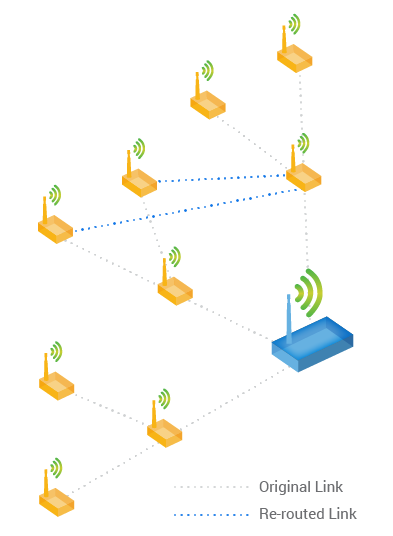
Robust
The wireless sensors are ultra low-power wireless transceivers that transfer data to and from one another, and use an on-board radio to send the packets to neighboring sensors. Each sensor passes the packet on to other sensors, in a series of “hops” that deliver data to their destination.
Sensors relay data to and from each other and, ultimately, to a network manager that coordinates routing, aggregates packets, collects network statistics, and handles all data transfers with the core Vigilent AI Engine. Network managers are wirelessly connected to the mesh network and directly connected, via Ethernet, to the AI Engine.
Multiple network managers can be installed at a facility to accommodate large volumes of sensors or to accommodate physical constraints in building design and layout. Sometimes, a network extender may be needed if there are long distances between network nodes, or physical obstructions in a facility’s layout.
The mesh network is self-configuring and self-healing – individual sensors will find the most efficient path to a manager. If a connection becomes unavailable, the network will automatically find a new path around unreachable points, and re-establish communications to the network manager.
Once the system’s machine learning has made decisions on how to best optimize the facility, wireless control modules provide the connection to CRACs and AHUs, closing the loop for direct machine control
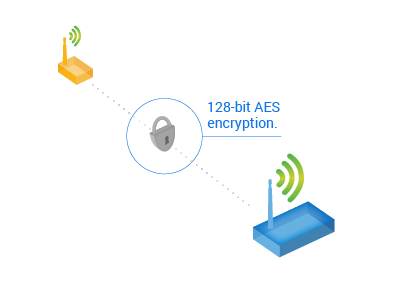
Secure
Vigilent ensures all of the wireless communication is secure by using the 802.15.4 wireless protocol to establish a separate secure network and 128-bit AES packet encryption for this mission critical data. To provide enhanced reliability and security, the network uses frequency hopping and a time-synchronized protocol.
Time-Synchronized Channel Hopping (TSCH) combines time diversity, frequency diversity, and physical diversity to assure reliability, scalability, power source flexibility, and ease-of-use. TSCH allows the network to automatically self-configure and be resilient to intermittent outages or changes in site layout.
This approach enables Vigilent to build a system on open, secure, standards-based technologies, rather than proprietary formats or jerry-rigged standards that aren’t enterprise-ready.

